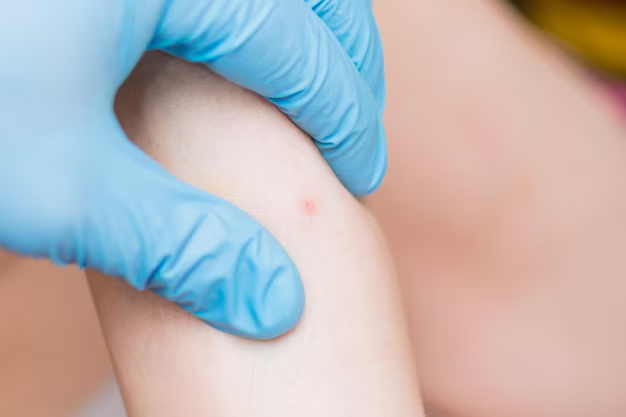Understanding Lyme Disease: Recognizing Symptoms and Knowing Your Next Steps
The buzzing sound of a distant summer's day, the gentle rustle of leaves, and the joy of being outdoors often mask a less pleasant reality—ticks. These small creatures, often encountered in wooded areas, can carry Lyme disease, a condition that is easier to treat if caught early. But how can you tell if you have Lyme disease? Let's navigate through the signs, symptoms, and essential actions you can take to maintain your health and peace of mind.
What is Lyme Disease?
Lyme disease is an infection caused by the bacterium Borrelia burgdorferi, transmitted primarily through the bite of infected black-legged ticks, commonly known as deer ticks. While all ticks do not carry these bacteria, certain regions, particularly in North America and Europe, have higher tick populations that do. Therefore, understanding the nature of Lyme disease is crucial for early detection and effective management.
The Domino Effect of Ticks: How Infection Occurs
When an infected tick bites a human, the bacteria stored within the tick's gut are transmitted into the human bloodstream. What makes this transmission tricky is the fact that ticks are tiny—near-invisible to the naked eye—and painless when biting. Therefore, many individuals do not realize they have been bitten until symptoms emerge.
Did You Know? Ticks can attach to any part of the body but are often found in hard-to-see areas such as the groin, armpits, and scalp.
Early Symptoms: Recognizing the Red Flags
The Telltale Rash: Erythema Migrans
One of the most common early signs of Lyme disease is a rash around the site of the tick bite, known as erythema migrans (EM). This may appear 3 to 30 days after the bite and is often characterized by a red, expanding bulls-eye appearance. However, not everyone with Lyme disease develops this rash, so it's vital to pay attention to other symptoms as well.
Fever, Chills, and Body Aches: Flu-like Symptoms
The early stages of Lyme disease can often mimic the flu, causing confusion. Symptoms like fever, chills, headache, fatigue, muscle, and joint aches, and swollen lymph nodes may appear and are easily mistaken for seasonal flu.
Tip: Due to these overlapping symptoms, track the timeline. If you have recently been in tick-infested areas and develop these symptoms, consult a healthcare professional to discuss the possibility of Lyme disease.
Beyond the Initial Phase: What Happens if Lyme Disease is Untreated?
Chronic Symptoms: A Growing Concern
If Lyme disease is not detected and treated promptly, it can progressively worsen. Weeks to months after the initial tick bite, a person may experience:
- Severe headaches and neck stiffness
- Additional EM rashes on other areas of the body
- Arthritis with severe joint pain and swelling, particularly in the knees
- Facial palsy or droop on one or both sides of the face
- Heart palpitations or an irregular heartbeat
- Episodes of dizziness or shortness of breath
Neurological Impacts: Lateral Consequences
In some cases, Lyme disease can affect the nervous system. This might lead to nerve pain, shooting pains, numbness, or tingling in the hands or feet, and problems with short-term memory. These symptoms underscore why early detection and management of Lyme disease are essential.
Protecting Yourself: Prevention and Next Steps
Be Tick Aware: Steps to Take in Tick-Infested Areas
- Wear protective clothing: Opt for long sleeves and pants when in wooded or grassy areas.
- Use insect repellent: Effective tick repellents include those with at least 20% DEET.
- Check for ticks regularly after being outdoors, and shower to wash away ticks before they bite.
- If a tick is found: Remove it promptly using fine-tipped tweezers, grasping as close to the skin as possible.
Consulting Healthcare Professionals: When to Seek Help
If you recognize any of the above symptoms after potential tick exposure, it’s vital to seek medical advice. Healthcare providers can perform thorough evaluations, including blood tests like the enzyme-linked immunosorbent assay (ELISA) followed by a Western blot test to confirm Lyme disease.
Tip: Early diagnosis and treatment with antibiotics are key to preventing long-term consequences, so immediate action following symptom onset is crucial.
Exploring Treatment Options: Focus on Recovery
Medical Intervention: A Lifeline
The most common treatment for Lyme disease, especially if caught early, involves a simple course of antibiotics. Treatment duration typically ranges from 10 to 21 days. When caught early, Lyme disease is usually associated with a full recovery, reducing the risk of long-term health issues.
Lifestyle Adjustments: Healing Holistically
In addition to precise medical treatments, considerations like a balanced diet, adequate hydration, regular physical activity, and ample rest can supplement the recovery process. These lifestyle practices also help enhance your immune response and overall health.
Lyme Disease in Perspective: Making Informed Choices
Understanding the nuances of Lyme disease—from recognizing early symptoms to taking precautionary steps against tick bites—empowers you to take control of your health. Lyme disease, while serious, can be effectively managed with prompt medical care. If you suspect tick exposure, familiarizing yourself with the symptoms and seeking timely medical consultation are your best strategies for prevention and recovery.
📝 Quick Summary for Lyme Disease
- Symptoms to watch for: Rash (Erythema Migrans), flu-like symptoms, headaches, joint pain.
- Transmission: Through bites from infected black-legged ticks.
- Prevention tips: Use insect repellent, wear protective clothing, perform regular tick-checks.
- When to seek help: If you observe symptoms post tick-exposure.
- Treatment: Mainly antibiotics; early treatment yields best outcomes.
- Lifestyle: Support healing with rest, a good diet, and regular exercise.
Armed with knowledge and a proactive approach, you are well-prepared to deal with Lyme disease effectively. Stay vigilant, stay informed, and prioritize your health. 🌿
